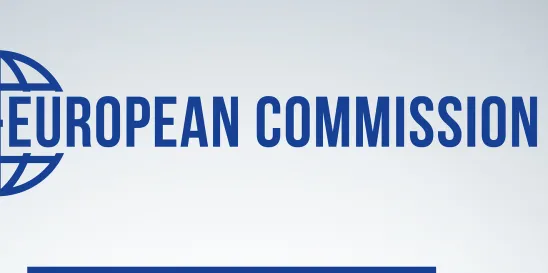On 7 December 2023, the European Commission issued three proposals implementing the objectives of the ‘One substance, one assessment’ (‘OSOA’) initiative.[1]
The OSOA was announced in 2020 within the Commission’s Chemicals Strategy for Sustainability[2], with the aim to foster more consistent and predictable decision-making. The initiative will directly affect EU agencies, including the European Chemicals Agency (‘ECHA’), the European Food Safety Agency (‘EFSA’), the European Medicines Agency (‘EMA’), the European Agency for Safety and Health at Work (‘EU-OSHA’), and the European Environment Agency (‘EEA’).
The three proposals respectively address the creation of a common data platform and the re-attribution of tasks among EU agencies.
Proposal for a Regulation establishing a common data platform on chemicals[3]
The Proposal announces the creation of a common data platform centralizing and consolidating data generated by the five pre-cited agencies that will be managed by ECHA.
The platform would progressively incorporate all data generated or submitted as part of the implementation of Union acts listed in Annex I of the Proposal,[4] including Regulation (EC) No. 178/2002 (‘General food law’) and Regulation (EC) No. 1935/2004 on materials and articles intended to come into contact with food (‘Framework Regulation’). This will include reference values, studies, and occurrence data, as well as information on regulatory processes on individual substances or groups of substances.
Such data would be accessible to the authorities without limitation and to the general public within the limitations set out under the applicable legislation. Finally, the proposed Regulation would enable ECHA to commission studies itself. However, the Proposal foresees that ECHA may do so only when results cannot be obtained through existing legal provisions or processes under the acts cited under Annex I (e.g., registration, requests for approval…). In this regard, ECHA would also need to cooperate with EFSA on the planning and commissioning of studies undertaken by both agencies.
Proposals on the re-attribution of scientific and technical tasks amongst agencies
The two other proposals address the re-attribution of tasks amongst agencies.
The Proposal for a Directive on the re-attribution of scientific and technical tasks to the European Chemicals Agency[5] reallocates scientific and technical tasks to ECHA that are currently performed by the Commission under Directive (EU) No. 2011/65/EU (RoHS Directive).
The Proposal for a Regulation on the re-attribution of scientific and technical tasks and improving cooperation among Union agencies in the area of chemicals[6], on the other hand, introduces provisions enhancing the cooperation and coordination of EU Agencies, including ECHA and EFSA.
It notably amends the General Food Law to include, amongst EFSA’s tasks, a cooperation with Member States’ authorities and EU agencies on the exchange of data and information and on the development of common scientific methods. In case of persistent divergences, both authorities have to prepare a joint report. Where such divergence between EFSA and another EU regulatory body regards the hazard classification of a substance in light of the criteria set out under Annex I of Regulation (EC) No. 1272/2008 (‘CLP Regulation’), the Commission may request ECHA to prepare a proposal for harmonized classification or amend an existing one. EFSA would in such case be required to cooperate with ECHA in developing the proposal.
Upcoming pilot project, impact on EFSA
In preparation of these changes, a pilot project on the substance butylated hydroxy toluene (BHT) has been launched by ECHA, EMA, and EFSA, with the view to foster the interoperability of hazard categorization amongst the three agencies.[7] This antioxidant used in a wide range of consumer uses is currently subject to six different assessments. In implementation of the OSOA approach, the harmonized classification and labeling would become the sole ground for determining hazards. This will likely lead to a situation where other agencies, such as EFSA, would limit themselves to performing an exposure assessment. This approach is likely to significantly decrease the role of EFSA in risk assessment.
Next steps regarding the Proposals
The three proposals are now under examination by the Council and the European Parliament. Comments may be submitted by stakeholders via the corresponding consultation pages until 7 February 2024.[8]
[1] The Commission’s press release is available at: https://ec.europa.eu/commission/presscorner/detail/en/ip_23_6413
[2] Available at: https://eur-lex.europa.eu/resource.html?uri=cellar:f815479a-0f01-11eb-bc07-01aa75ed71a1.0003.02/DOC_1&format=PDF
[3] Proposal for a Regulation establishing a common data platform on chemicals, laying down rules to ensure that the data contained in it are findable, accessible, interoperable, and reusable, and establishing a monitoring and outlook framework for chemicals, 2023/0453 (COD). Available at: https://environment.ec.europa.eu/system/files/2023-12/COM_2023_779_1_EN_ACT_part1_v2.pdf
[4] Available at: https://environment.ec.europa.eu/system/files/2023-12/COM_2023_779_1_EN_annexe_proposition_part1_v2.pdf
[5] Available at: Proposal for a Directive on the re-attribution of scientific and technical tasks to the European Chemicals Agency
[6] Available at: Proposal for a Regulation on the re-attribution of scientific and technical tasks and improving cooperation among Union agencies in the area of chemicals
[7] Presentation from EFSA at the FAF Plenary Meeting of 26 October 2023, "Chemicals Strategy for sustainability and one substance assessment – impact to EFSA."
[8] Available at:
- Consultation on the Proposals on the re-attribution of scientific and technical tasks among agencies: https://ec.europa.eu/info/law/better-regulation/have-your-say/initiatives/13161-Chemicals-making-best-use-of-EU-agencies-to-streamline-scientific-assessments
- Consultation on the Proposal for a Regulation establishing a common data platform on chemicals: https://ec.europa.eu/info/law/better-regulation/have-your-say/initiatives/13459-Securite-chimique-amelioration-de-lacces-aux-donnees-relatives-aux-produits-chimiques-pour-les-evaluations-de-la-securite




 />i
/>i
